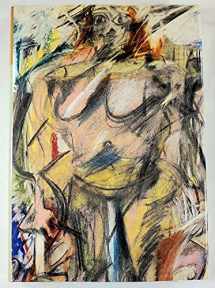
Willem de Kooning: Tracing the Figure
Book details
Summary
Description
Willem de Kooning, one of the great pioneers of Abstract Expressionism, experimented with the human form throughout his career. An artist deeply skeptical about Western ideals of beauty, he focused on anatomical fragmentation and spatial ambiguity to express the fleeting nature of the individual. This strikingly designed book, published in conjunction with an exhibition originating at The Museum of Contemporary Art, Los Angeles, explores de Kooning's drawings of the female form between 1940 and 1955. It reveals an artist who struggled to eliminate traditional barriers between drawing and painting as he explored ambiguities between the figure and its background.
De Kooning relied on early-twentieth-century abstraction in his initial attempts to redefine the figure, drawing and re-drawing the same line until he resolved the image. Beginning in 1947-49, he synthesized abstraction and figuration, dismembering figures and rearranging them with seeming randomness. As his figural compositions developed, geometric configurations transformed into architectural elements (suggesting windows, doors, mirrors, paintings, and furniture) to create ambiguous space. In 1951, de Kooning abruptly returned to depictions of women. Using turbulent brushwork, he turned female figures into monumental, intentionally vulgar, wildly distorted images whose parts read alternately as flat pattern and fully rounded forms. The effect is an almost violent sensuality.
The artist's later style differed dramatically from that of earlier decades. Familiar shapes and hues suggest that women remain in his works, yet they are distorted beyond recognition as if seen from underwater. As put by Thomas Hess, the artist's friend and critic, "Woman, for de Kooning, is the human equivalent of water; more than a vessel, she embodies it in planes of rippling flesh."
EXHIBITION SCHEDULE
http://www.artcommotion.com/Issue2/moca/home.html The Museum of Contemporary Art, Los Angeles
February 10, 2002-May 5, 2002
http://www.nga.gov/home.htm The National Gallery of Art, Washington, D.C..
September 29, 2002-January 5, 2003
http://www.sfmoma.org/ The San Francisco Museum of Modern Art
June 15 - September 8, 2002


We would LOVE it if you could help us and other readers by reviewing the book
Book review



